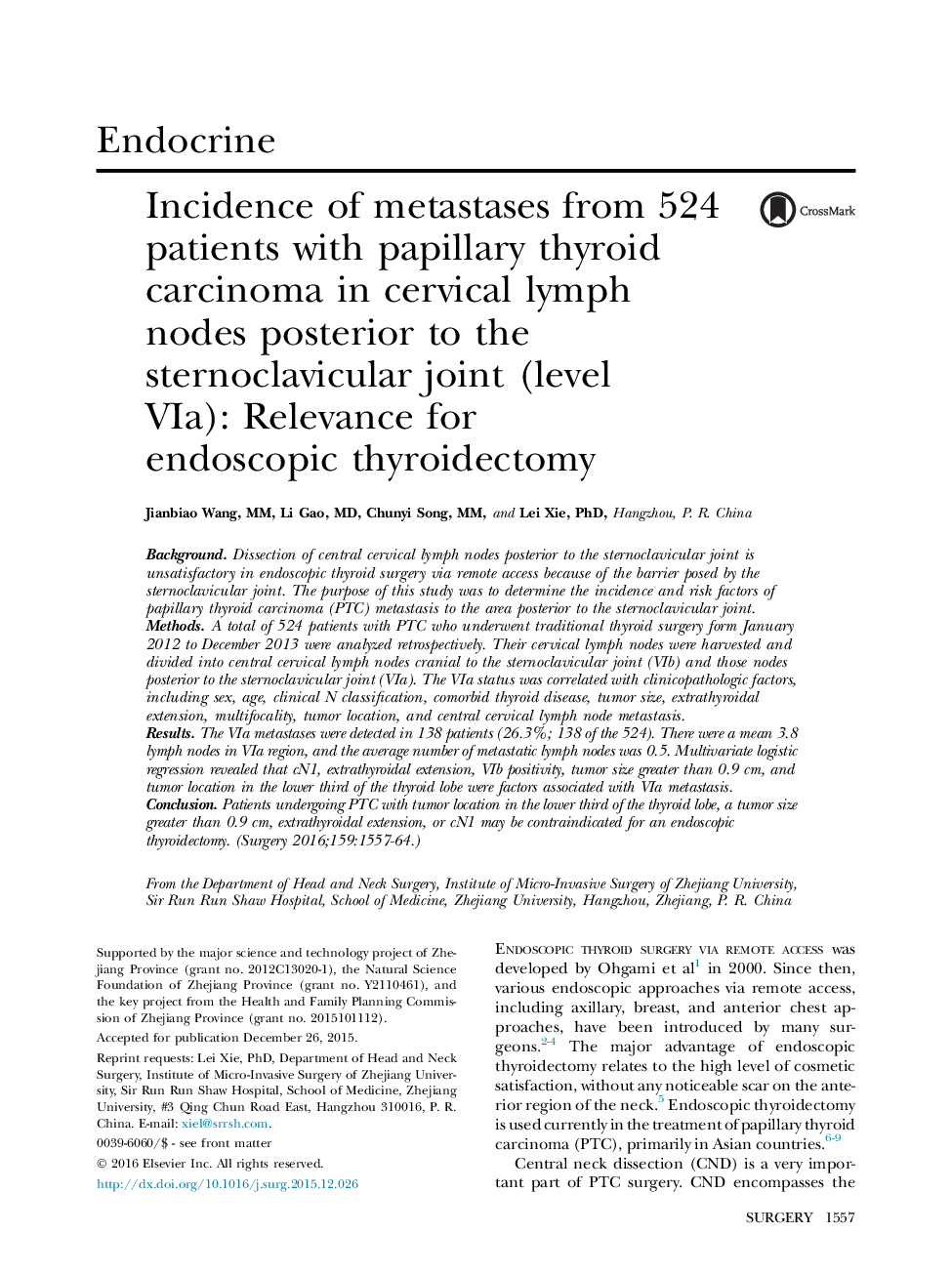| Article ID | Journal | Published Year | Pages | File Type |
|---|---|---|---|---|
| 4306570 | Surgery | 2016 | 8 Pages |
BackgroundDissection of central cervical lymph nodes posterior to the sternoclavicular joint is unsatisfactory in endoscopic thyroid surgery via remote access because of the barrier posed by the sternoclavicular joint. The purpose of this study was to determine the incidence and risk factors of papillary thyroid carcinoma (PTC) metastasis to the area posterior to the sternoclavicular joint.MethodsA total of 524 patients with PTC who underwent traditional thyroid surgery form January 2012 to December 2013 were analyzed retrospectively. Their cervical lymph nodes were harvested and divided into central cervical lymph nodes cranial to the sternoclavicular joint (VIb) and those nodes posterior to the sternoclavicular joint (VIa). The VIa status was correlated with clinicopathologic factors, including sex, age, clinical N classification, comorbid thyroid disease, tumor size, extrathyroidal extension, multifocality, tumor location, and central cervical lymph node metastasis.ResultsThe VIa metastases were detected in 138 patients (26.3%; 138 of the 524). There were a mean 3.8 lymph nodes in VIa region, and the average number of metastatic lymph nodes was 0.5. Multivariate logistic regression revealed that cN1, extrathyroidal extension, VIb positivity, tumor size greater than 0.9 cm, and tumor location in the lower third of the thyroid lobe were factors associated with VIa metastasis.ConclusionPatients undergoing PTC with tumor location in the lower third of the thyroid lobe, a tumor size greater than 0.9 cm, extrathyroidal extension, or cN1 may be contraindicated for an endoscopic thyroidectomy.
